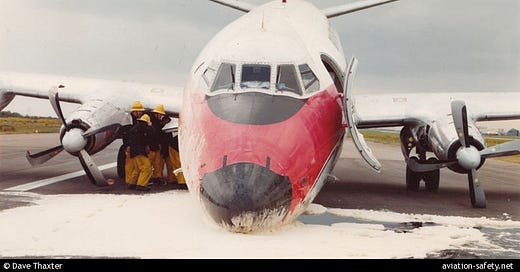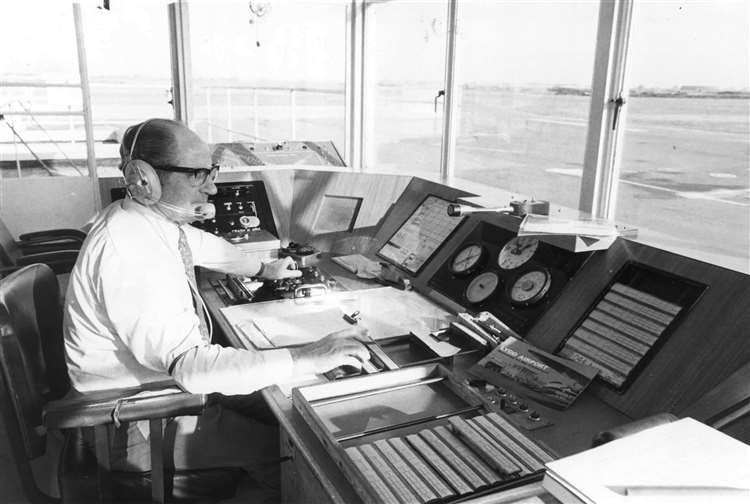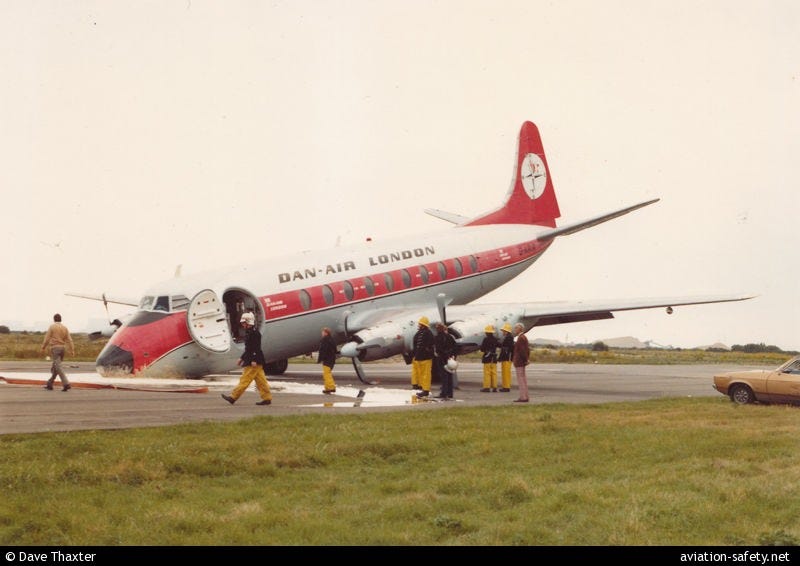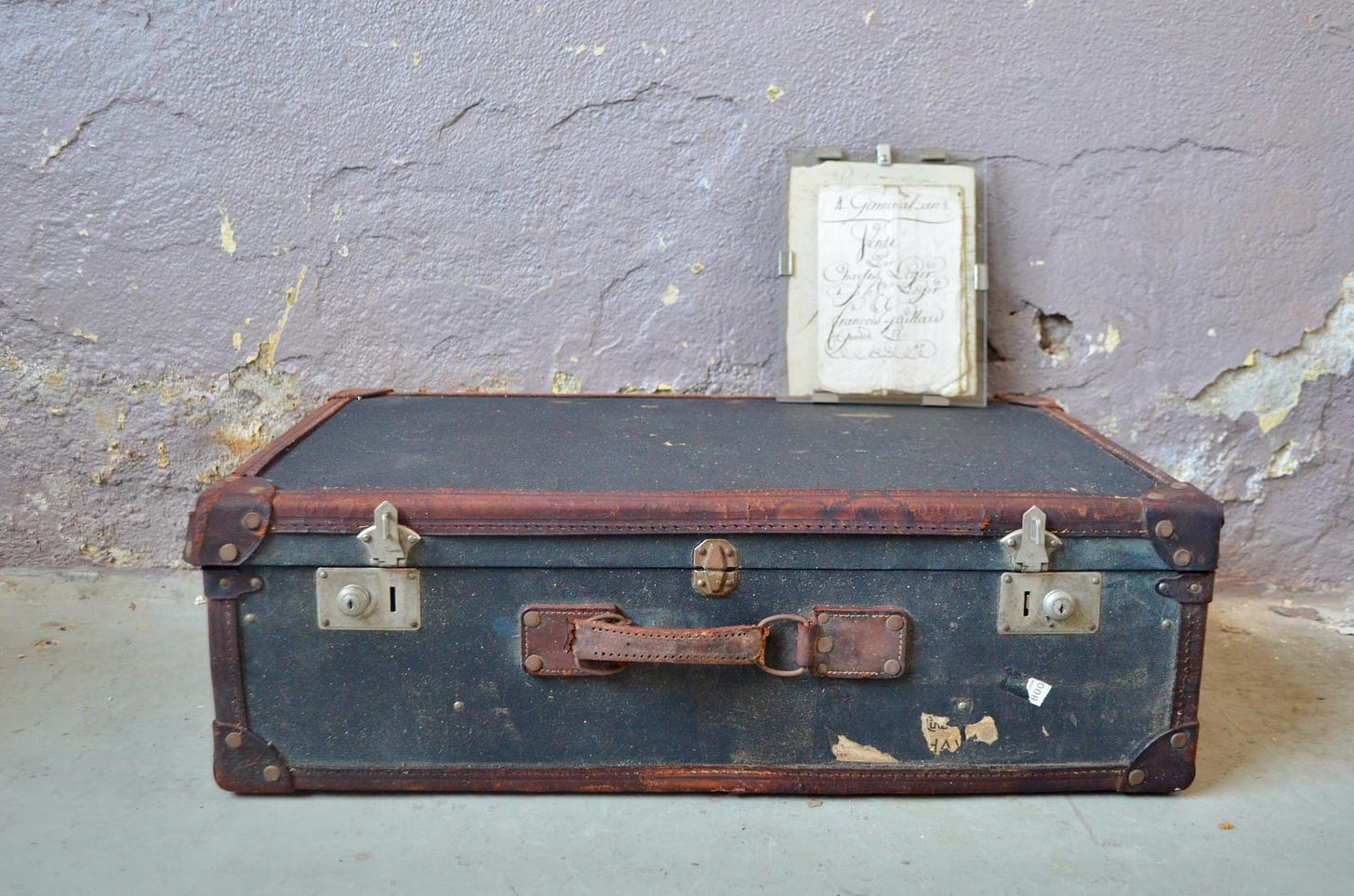Unpacking Our Emotional Suitcase
When I was a kid my Mum took me to watch a plane crash - Now Stephen King is helping me make sense of it all
A lot of us grow up and we grow out of the literal interpretation that we get when we're children, but we bear the scars all our life. Whether they're scars of beauty or scars of ugliness, it's pretty much in the eye of the beholder.
Stephen King
It is very easy to grow up thinking that everything we know is normal. We accept situations, beliefs and traditions and find it hard to imagine anyone living any differently. As we get older we become aware of how other people, towns and cultures behave or speak. My parents had always told me how life was to be lived and I had to believe that they were right. After all they knew what was best for me (they said) so if there was any problem then it must have been my mistake!
The year 1978 sticks in my mind for many reasons. It was the first summer after the 1977 Queen’s Silver Jubilee when we had all received commemorative mugs at school and somebody had put a couple of trestle tables up in the street to serve sugary cakes and drinks and celebrate Her Majesty. And it was two summers after the great drought of 1976.
During the summer of 1978 something weird happened. At the time I didn’t question it and have always accepted that it was a regular part of growing up. We were living in a village called Lydd which is spread out on the flat fields of the Romney Marsh in Kent. There was a railway station there that used to have services up to London but now only carried supplies to nearby Dungeness Nuclear Power Station. There was also an airport which used to operate regular scheduled services across the Channel with Silver City Airways’ Carvair, which was a plane that you drove your car onto! By 1978 the airport had Skyways- a cargo airline using old DC-3s from World War 2 and regular flights with low cost airline Dan Air which hopped over to Beauvais in France. My mum worked in Air Traffic Control there so I got to hang around the control tower and was allowed to wait up with the grown ups when everyone stayed late for the Duke of Edinburgh’s flight. I was on the tarmac when Paul and Linda McCartney arrived or the Battle of Britain memorial flight would stop to refuel. I would spend days at the airport listening to the air traffic radio, looking at the radar and learning how to fill out the flight plans that got rolled up, stuffed into clear plastic cannisters and put into the vacuum tube that viciously sucked them up to the men controlling the flights. Papers would be unwrapped, slid onto three sided wooden blocks and slotted into the flight plan board from where orders could be transmitted and control maintained. The men wore shirts and ties and everyone smoked - all the time.
Inside the 1950s terminal building was what seemed like an acre of shiny floor. There was a duty free kiosk in the corner staffed by a very glamorous woman. She always had full set hair, a cigarette and her corgi dog. I imagined her life was an endless stream of glamour and fantasy being flown around the world by the all the cool pilots. In reality she was working in a shop - but the dog thing was cool!
Looking back it is quite strange to think that a nine year old boy would be given free run of an airport. If I had been cleverer I might have written some notes about my time there and turned it into a series of books and TV shows in the style of so many lazy British period dramas that love convincing us that the bad old days were wonderfully warm and safe. But in reality I locked the memories away - a rich kids toy retained in its original wrapping and never to be played with.
It was the middle of the summer of 1978 when the weird occurrence happened. I know now that it was Thursday August 10th 1978 which was a few days after my youngest brother’s second birthday. It was a bright and warm summer’s day of the kind that only really exist in the countryside. My mum was not working that day but our babysitter, Susan, was with us in our 3 bedroomed, 4 year old semi detached house on Station Road, opposite a small piece of waste ground and the cemeteries.
The phone rang. It was an off white rotary dial phone that sat on its own table in the hallway by the front door. My mum answered “Hello, Lydd two - oh - double oh - si -ix” with a raised inflection on the six which was how you answered phones in those days. Whatever message had been relayed to her sounded exciting and urgent. In 1978 it was rare for the phone to ring because every call had to be paid for by the minute. We soon discovered what the fuss was all about.
“Quick” said my mum “We’re going to the airport because the Dan Air flight is going to crash!”
All I remember is the rush. Out of the front door, turning left up Station Road, past the houses that were just like ours, across the level crossing, taking a diagonal right over the grass onto the airport road which was a single track lane cutting through farmland and marsh with drainage dykes either side.
As we hurried along the airport road we could see the Dan Air Vickers Viscount plane flying low circuits. The village’s fire engine and ambulances raced up towards the soon to happen disaster. The local on call GP, Doctor Huxley-Williams, tore past in his Morris Traveller, smoking his Rothmans as he went. The complete line up of emergency services necessary for an air crash was now assembled.
Again the airliner passed overhead. My mum was worried that we wouldn’t make it in time to see the impact. The road curved to the right to run parallel with the runway and there was a wide grass verge to sit on in front of a drainage dyke which is known as the Dengemarsh Sewer. Our little group settled here - me, my mum, the babysitter and possibly all three of my siblings. Once in place my mum explained all. While preparing to land, the aircrew lowered the undercarriage but the nose wheel had not locked and was now being held in place by a hand operated hydraulic pump! This meant that when the plane landed it could splat on impact putting the crew and passengers in imminent danger. This was exciting news for a nine year old!
We could see the control tower and terminal building to our right, directly in front of us across a field was the main runway and a couple of miles further away shimmering through the heat haze were the three stubby towers of Dungeness Nuclear Power Station. As we got into position the plane passed overhead once more. “Oh no” said my mum “what if it goes to Manston instead, where they can put foam across the whole runway? If it does that we won’t see it!” We were horrified. We had come all this way to see a plane crash and now we could be deprived of the spectacle all because the nearby military airfield could spray more foam across the runway! Life was not fair!
Luckily, this did not happen. We saw the red and silver liveried plane take its position for a final approach. It was flying in from the South West, with Camber Sands and Rye to the plane’s left, the English Channel and the Nuclear Power Station to its right. Surely this was going to be ‘the one’!
Thank you for reading The Jason Ward Creative Substack. If you enjoy this piece would be wonderful if you would support my work by taking out a subscription. Many Thanks!
The approach was gentle. The 1954 built plane had four Rolls Royce Dart propeller engines and was carrying 45 passengers and 4 crew for a total of 49 souls onboard with no nose wheel. What a crash we were about to see! We saw the plane descend and delicately place its main wheels on the tarmac. It stayed nose up as it passed behind the control tower and then like a dancer extending her leg in a controlled tendu the pilot brought the nose down. It held. There was to be no crash. Then suddenly the undercarriage gave way. The nose cone slammed into the runway. There was a crash and a deep friction driven roar as metal and tarmac ground on each other at 60 knots. Sparks and flames erupted from the nose cone, the engines screamed as the propellors bit into solid runway instead of clean air. The airliner continued its crippled slide along the runway, 49 people onboard powerless to control their destiny.
Then it stopped. Smoke continued to drift away from the nose cone. There was momentary silence. We waited for an explosion. There was stillness. Then after slight tacit the chorus of emergency bells and sirens came in on the downbeat as the fire engines arrived and sprayed foam all over the burnt up nose cone. The front passenger cabin door opened and the passengers jumped the metre or so out of the opening onto the ground below and walked away. Still there was no explosion, no fire - nothing.
Just a plane laying broken on the runway on a quiet summer’s day in the countryside. The legend DanAir London reading from left to right and down to up. The once proud Vickers Viscount had its head down, propellors bent, scarred by friction and doused in foam. It was no more a proud aristocrat of the sky transporting people on their dream holidays but just some metal pieces on a strip of tarmac on a marsh in Kent. A boxer laid flat on the canvas unable to move. A lifeless shell of its previous self.
After watching, waiting and trying to take photographs with a 126 Instamatic photo we all headed back home to tell the neighbours about the crash. The excitement lasted a day or so but we soon moved on to other things. Punk was starting and my next door neighbour Roger was becoming a ‘punk rocker’ He was a few years older than me but let me hang out with him and listen to the Sex Pistols! He even took me to a punk gig in Hastings in 1979.
For years I have always accepted that my mum took us to watch an air crash in the same way that I accepted that eating the crusts of my sandwiches would make my hair curly or as long as I stayed out of prison I had succeeded in life. But on that day in 1978, 49 people could easily have died but for the skill of the flight crew. It was no mere happenstance that we were spectators in a potential disaster - my mum had actively chosen the possibility of seeing an airliner full of people crash on landing as an afternoon’s entertainment. Just getting the kids out of the house!
This whole incident came to my mind after reading Stephen King’s incredible book ‘On Writing’. The first half of the book is autobiographical with King describing his life and the experiences that influence his writing. I remember thinking that he had lived a strange life from crushing his foot at an early age, to domestic instability and later suffering the demons of addiction. King, like all of us has been formed by the memories, incidents and dynamics of his life and, unlike most of us, he has the ability to put them to creative use. In the second half of the book King shares his beliefs on how best to write books. He is clear that our job as creatives is connecting the unconnected. He allows real emotions, places and experiences to influence his work in a way that keeps truth in his books which is also what makes them so terrifying and effective.
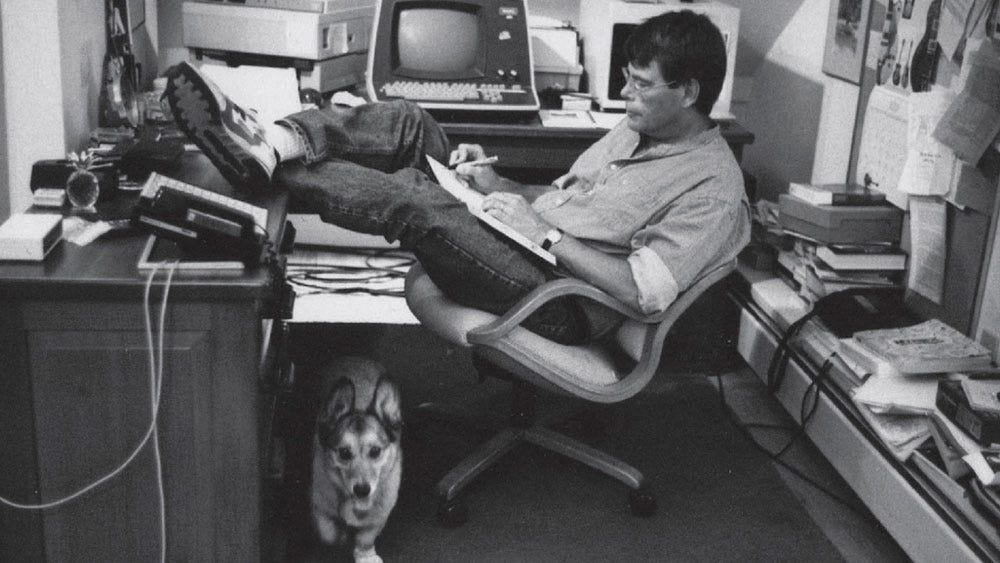
After reading King’s book I reflected on things that happened in my own life that I have always accepted as normal but are actually anything but. Like the time my mum drove our car into a river and I pulled her and my sister out or how I knelt on a piece of metal and split me kneecap open when I was 5 years old and on holiday in Yugoslavia, or when my mother’s second husband tried to save their marriage by coming home with a new lawnmower! None of these incidents have consciously influenced my creative work and I may, in fact, have tried to avoid them or hide them away only to be rationalised in sessions with my therapist.
There are incidents and oddities that exist in the childhood part of all of our minds. It is the part that unquestioningly accepts a reality and then locks down that definition in an emotional suitcase with an old fashioned metal lock. You can hear and feel the mechanical snap when the case is safely and fully closed. How often do we stand back and question our life’s events by unlocking the suitcase of our experiences to rearrange what’s inside and to look for other meanings? We rarely do because nobody wants to open up a suitcase to refold their t-shirts. But I think as people and creatives we should be looking for inspiration and clarity by reopening our emotional suitcases - after all I have always believed that it was perfectly normal for my mum to take her kids to watch an air crash!
This is the Aviation Safety Network report on the Dan Air Vickers Viscount crash at Lydd Airport in 1978.
The Vickers Viscount aircraft was flying from Beauvais, France, to Lydd Airport, U.K.. During the approach the landing gear was selected down and the two main gear indicator lights showed green, but the nose gear light remained red. The landing gear was re-cycled twice but the nose gear light remained red. The hydraulic changeover lever was moved to emergency and after the hand pump had been operated a short while, the nose gear light changed to green. The visual indicator also showed the nose gear as down. The Tower were informed that 'three greens' were now indicated and the aircraft was cleared to land. During the approach and landing continuous pressure was maintained on the hand pump. The touchdown was normal on the main wheels and the nose wheel was held off until approximately 50 to 60 knots when it was lowered gently onto the runway. After running about 100 m the nose gear collapsed and the nose of the aircraft settled onto the runway. After the aircraft came to a stop, the passengers were evacuated through the front left main door, the sill of which was about one metre above ground level.
https://aviation-safety.net/database/record.php?id=19780810-1
The aircraft was repaired and returned to service on September 17.1978, after fitment of replacement nose undercarriage doors, Rolls-Royce Dart engines and Dowty propellers.
After repair the plane G-ARIR continued in service until 1984 and was eventually broken up for scrap in March 1989

